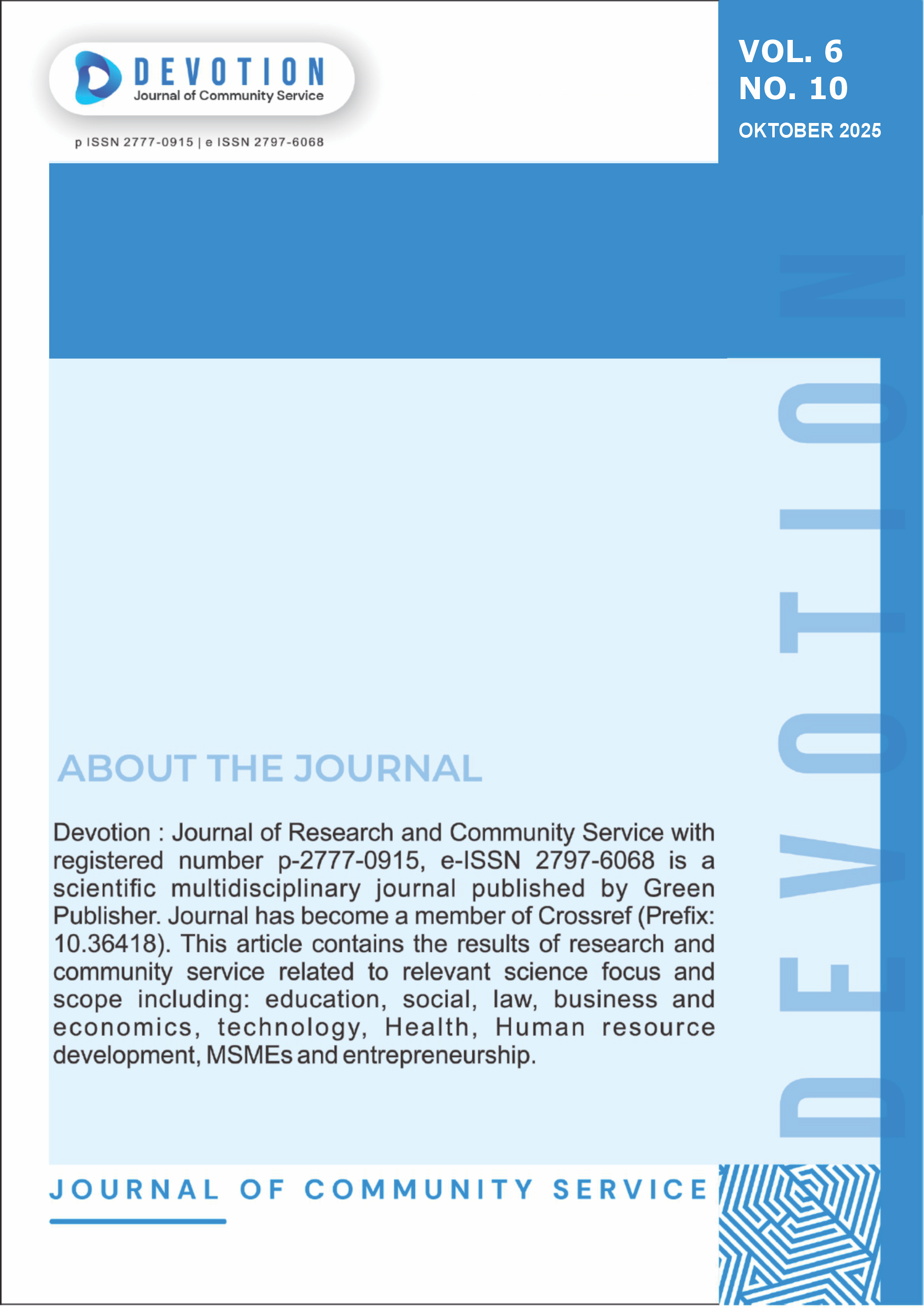Analysis of the South China SEA: Resource Potential and Future Conflict Risks for Asean Countries
DOI:
https://doi.org/10.59188/devotion.v6i10.25551Keywords:
ASEAN, Conflict Management, Resource Potential, South China Sea, Territorial DisputesAbstract
The South China Sea represents one of the most strategically significant maritime regions globally, characterized by complex territorial disputes involving China, Taiwan, Philippines, Vietnam, Malaysia, and Brunei. This study examines the resource potential of the South China Sea and analyzes how these resources influence conflict risks for ASEAN member states. Employing qualitative research methodology through case study design and process-tracing techniques, this research investigates the interplay between natural resource exploitation, territorial claims, and security dynamics in the region. The findings reveal that the South China Sea contains substantial reserves of oil (estimated 11 billion barrels), natural gas (190 trillion cubic feet), and fisheries resources (8 million metric tons annually), alongside serving as a critical international trade route with approximately $5.3 trillion in goods transiting annually. The territorial disputes are exacerbated by competing interpretations of the United Nations Convention on the Law of the Sea (UNCLOS), China's nine-dash line claims, and increasing militarization of disputed features. ASEAN's mediation efforts face significant challenges due to diverse member interests, Chinese economic leverage, and external power involvement. The study concludes that effective conflict management requires strengthened ASEAN unity, enhanced diplomatic mechanisms, adherence to international law, and cooperative frameworks for resource sharing. The research contributes to understanding how resource-rich maritime territories shape regional security architecture and provides policy recommendations for peaceful dispute resolution in contested waters.
Downloads
Published
Issue
Section
License
Copyright (c) 2025 Ari Yunanto

This work is licensed under a Creative Commons Attribution-ShareAlike 4.0 International License.
Authors who publish with this journal agree to the following terms:
- Authors retain copyright and grant the journal right of first publication with the work simultaneously licensed under a Creative Commons Attribution-ShareAlike 4.0 International. that allows others to share the work with an acknowledgement of the work's authorship and initial publication in this journal.
- Authors are able to enter into separate, additional contractual arrangements for the non-exclusive distribution of the journal's published version of the work (e.g., post it to an institutional repository or publish it in a book), with an acknowledgement of its initial publication in this journal.
- Authors are permitted and encouraged to post their work online (e.g., in institutional repositories or on their website) prior to and during the submission process, as it can lead to productive exchanges, as well as earlier and greater citation of published work.













